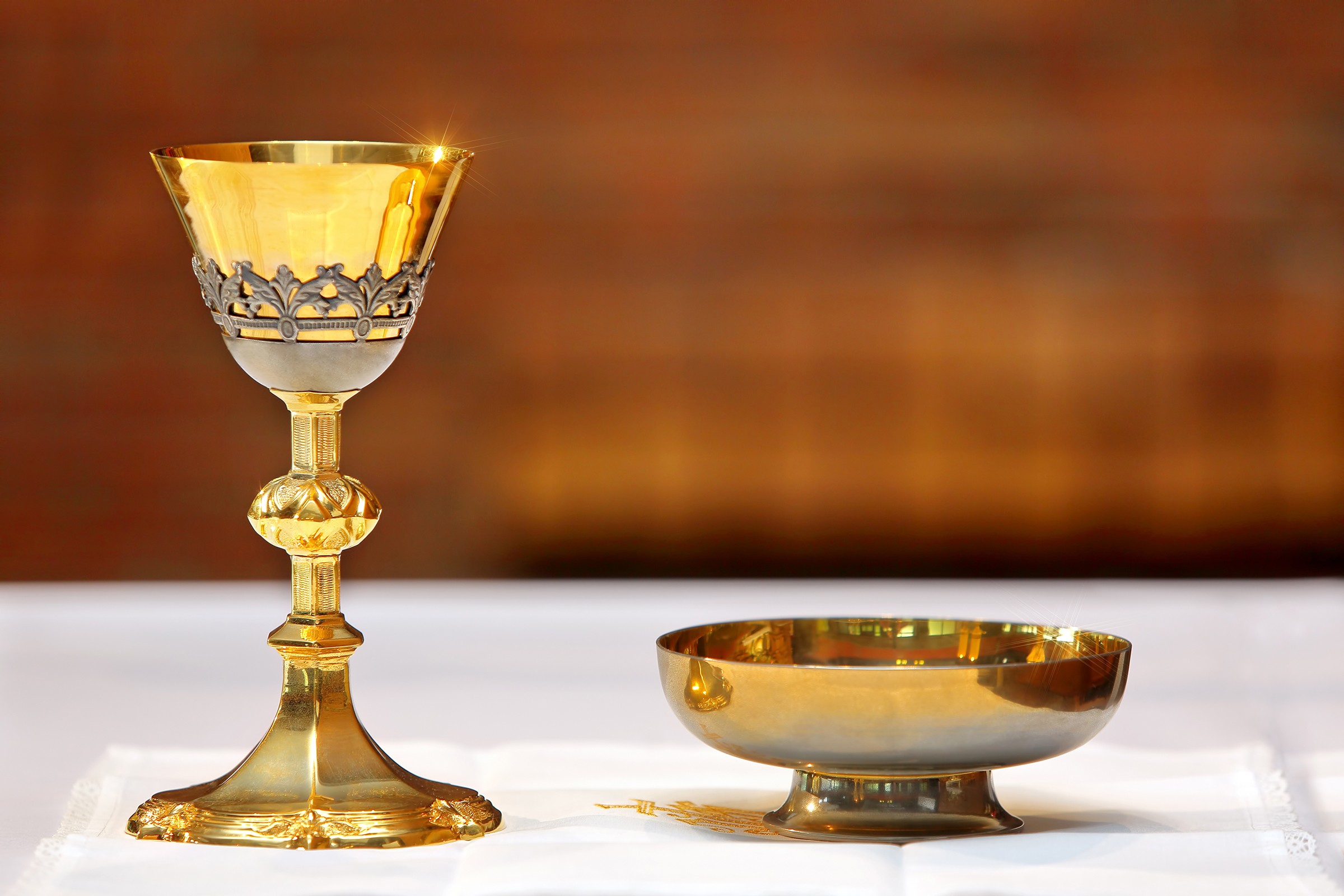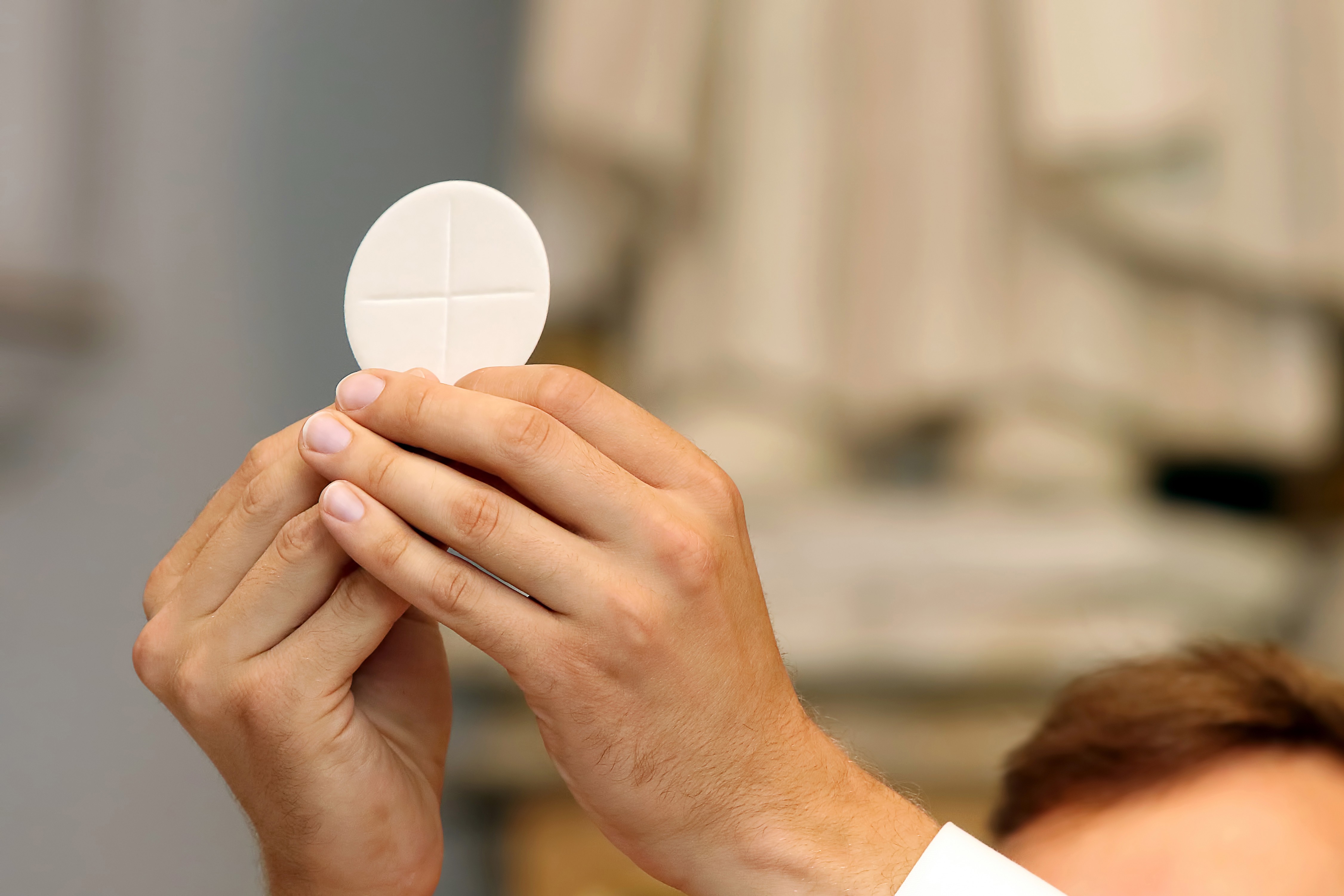The corporal, a seemingly simple square of white linen, plays a crucial role in the Catholic Mass. More than just a piece of fabric, it holds deep symbolic meaning and is treated with utmost reverence. This guide delves into the significance of the corporal, its use during the liturgy, and the precise method of folding—a practice that safeguards the sacred elements and honors the body of Christ.
 Golden chalice on the altar during mass
Golden chalice on the altar during mass
The Corporal: Name, Purpose, and Significance
The term “corporal” originates from the Latin word “corpus,” meaning “body.” This etymology hints at the cloth’s profound connection to the Eucharist, where bread and wine are transubstantiated into the body and blood of Christ. Placed on the altar at the beginning of the offertory, the corporal serves as the foundation upon which the paten (holding the host), chalice (containing the wine), and ciborium (for additional consecrated hosts) are placed.
Historically, the host rested directly on the corporal, further emphasizing its symbolism as the burial shroud of Christ. Today, it primarily functions to prevent any particles of the consecrated host from being lost. This practice underscores the reverence and care with which the Eucharist is treated, reflecting the belief in the Real Presence of Christ in the sacrament.
Folding the Corporal: A Ritual of Respect
The corporal is typically a square of white linen, approximately 50 by 50 centimeters, though larger sizes accommodate multiple vessels. A centrally embroidered cross, positioned to face the priest during consecration, serves as a visual reminder of the sacrifice of Christ. The specific folding method, a meticulous process passed down through generations, further reinforces this symbolism.
The corporal is first folded in thirds lengthwise, starting with the front edge and folding the opposite side over it. Then, it is folded in thirds again, this time widthwise. This creates a smaller square, effectively enclosing any remaining fragments of the consecrated host within its folds. This act of careful folding not only safeguards the sacred elements but also symbolizes the wrapping of Christ’s body in the tomb.
 The host elevation
The host elevation
The Corporal in Context: Altar Linens and the Liturgy
The corporal is just one of several liturgical linens used in the Mass. Each cloth—the pall, the purificator, the manuterge—serves a specific purpose and carries its own symbolic weight. Together, these linens contribute to the reverence and beauty of the liturgy, highlighting the sacred nature of the Eucharistic celebration. Understanding the significance of the corporal and its folding deepens our appreciation for the rich traditions and symbolism embedded within the Catholic Mass. The careful handling and precise folding of the corporal exemplify the profound respect and adoration given to the Eucharist, the very body and blood of Christ.

